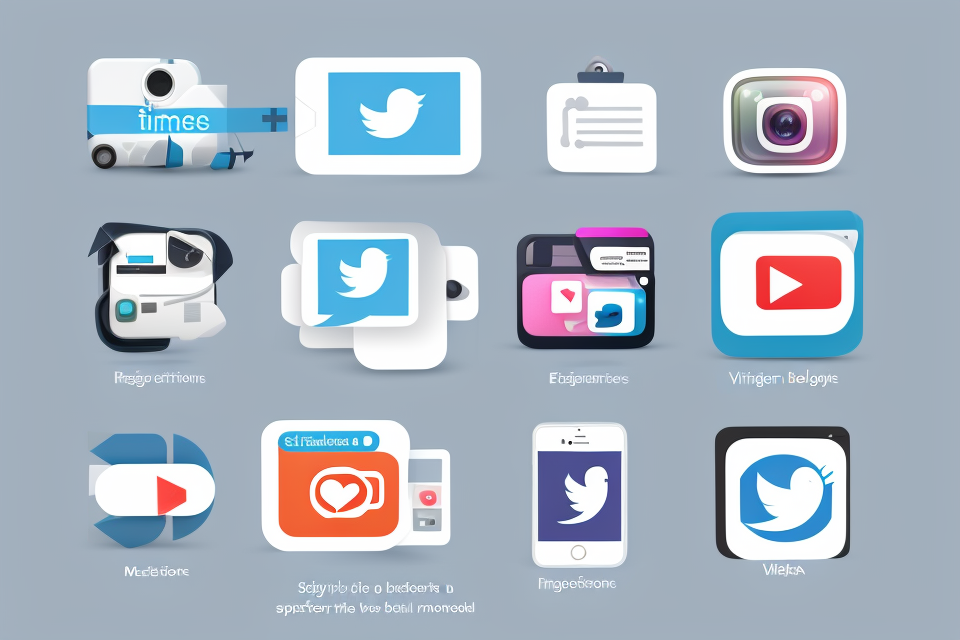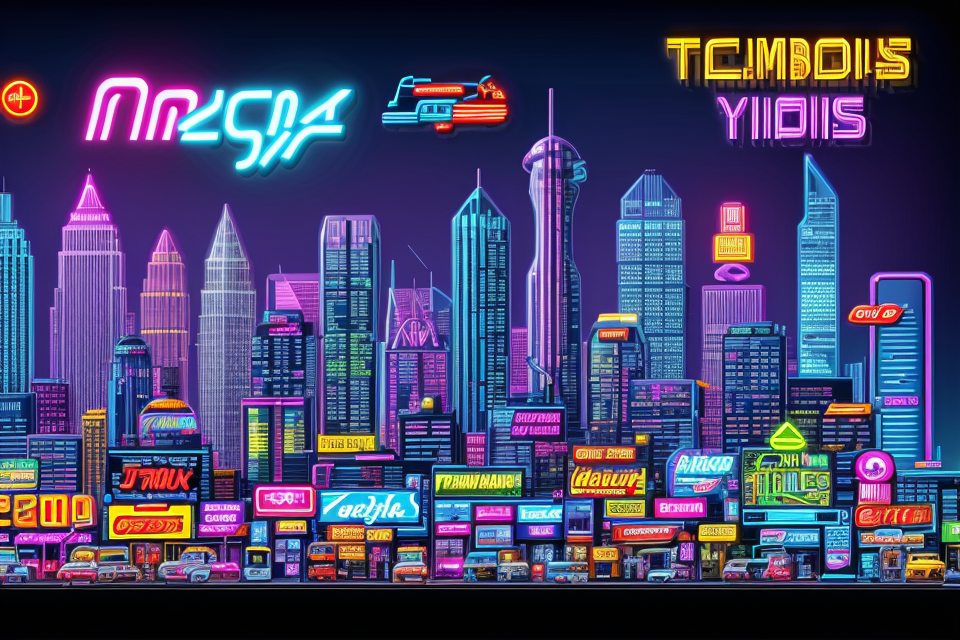In 1999, the world was on the cusp of a digital revolution. The internet was rapidly evolving, and with it, a new form of communication was emerging: social media. But what exactly was available back then? In this article, we’ll take a trip down memory lane and explore the social media landscape of 1999. From the early adopters to the pioneering platforms, we’ll uncover the sites and services that laid the foundation for today’s vibrant online communities. So buckle up and join us as we revisit the social media scene of two decades ago, and discover how it shaped the world we know today.
In 1999, the social media landscape was vastly different from what we know today. At the time, the term “social media” was not yet commonly used, and the internet was still in its infancy. The first social media platforms, such as Six Degrees and Friendster, were just starting to gain popularity, allowing users to create profiles and connect with others online. However, these early platforms were limited in their functionality and user base. It wasn’t until the launch of MySpace in 2003 and the subsequent rise of Facebook in 2004 that social media truly took off and began to transform the way people communicate and interact online.
The Evolution of Social Media
The Beginning of the Internet Era
The First Websites and Online Communities
In the early days of the internet, the first websites were simple and mostly informational. They were often created by individuals or small businesses looking to share information with a wider audience. These early websites were mainly text-based and lacked the interactive features that we take for granted today.
The Emergence of Online Forums
As the internet became more popular, online forums emerged as a way for people to connect and share information with like-minded individuals. These forums were often centered around specific topics, such as hobbies or interests, and allowed users to create profiles, post messages, and interact with other members.
One of the earliest and most popular online forums was Usenet, which was created in 1980. Usenet allowed users to post messages and participate in discussions on a wide range of topics, from science and technology to sports and entertainment. Other popular forums included eBaum’s World, which was founded in 1997 and focused on humor and pop culture, and The Well, which was launched in 1986 and was one of the first online communities to allow users to create profiles and connect with each other.
As online forums became more popular, they also became an important platform for online communities to form and share information. Many early social media platforms, such as Friendster and MySpace, were built on top of the forum model and allowed users to create profiles, connect with friends, and share information with a wider audience.
The Rise of Personal Websites and Blogs
In 1999, the social media landscape was marked by the rise of personal websites and blogs. These online platforms allowed individuals to share their thoughts, experiences, and creative content with a global audience. Here are some of the key developments in this area:
Geocities and Tripod Pages
Geocities and Tripod were two popular website-building platforms that gained traction in the late 1990s. These platforms provided users with simple tools to create their own web pages, which they could then customize with text, images, and links. Many individuals used these services to create personal homepages, where they could share information about themselves, their interests, and their hobbies.
Geocities, in particular, became known for its user-friendly interface and the wide range of themes and templates available to users. This made it easy for people with little or no coding experience to create professional-looking websites. Tripod, on the other hand, was geared more towards creatives, offering features like image hosting and web-based email.
The Birth of Blogging Platforms
As personal websites gained popularity, a new form of online expression emerged: blogging. Early blogging platforms like Open Diary and LiveJournal allowed users to create online diaries or journals, where they could share their thoughts, feelings, and experiences on a daily basis. These platforms offered a more personal and intimate way of sharing content than traditional websites, which made them appealing to many users.
LiveJournal, in particular, became known for its tight-knit community of users who shared similar interests and hobbies. The platform allowed users to create friend lists, leave comments on each other’s posts, and join communities centered around specific topics. This fostered a sense of online camaraderie and support that was rare at the time.
The rise of personal websites and blogs in 1999 marked a significant shift in the way people interacted online. These platforms allowed individuals to share their voices and perspectives with a global audience, laying the foundation for the modern social media landscape.
The Early Social Media Networks
Friendster and MySpace
In 1999, the social media landscape was in its infancy, with only a few platforms available to users. One of the earliest social media networks was Friendster, which was launched in 2002. Friendster was a social networking site that allowed users to create profiles, connect with friends, and share photos and messages. It was initially popular among teenagers and young adults and was known for its simple design and user-friendly interface.
Another early social media network that emerged in 1999 was MySpace. MySpace was originally designed as a platform for musicians to connect with fans, but it quickly evolved into a broader social networking site. Users could create customizable profiles, add friends, and share content such as photos and videos. MySpace was particularly popular among teenagers and young adults and was known for its customizable layouts and avatars.
LinkedIn’s Inception
While Friendster and MySpace were among the earliest social media networks, another platform that emerged in 1999 was LinkedIn. LinkedIn was initially designed as a professional networking site, allowing users to create profiles, connect with colleagues, and share information about their careers. The platform was initially aimed at professionals in the business world, but it quickly expanded to include users from a variety of industries.
Despite its initial focus on professional networking, LinkedIn has since evolved to include a range of features, including job listings, groups, and educational resources. Today, LinkedIn is one of the largest professional networking sites in the world, with millions of users across a variety of industries.
Overall, the early social media networks of 1999, including Friendster, MySpace, and LinkedIn, laid the foundation for the modern social media landscape. These platforms allowed users to connect with others, share content, and build communities online, paving the way for the proliferation of social media in the years to come.
The Impact of Social Media on Society
Changes in Communication
Instant Messaging and Chat Rooms
In 1999, instant messaging and chat rooms were the primary forms of real-time online communication. Companies like AOL and Yahoo offered their own instant messaging services, which allowed users to communicate with each other through text messages and even voice and video calls. These services became popular among young people, who used them to connect with friends and meet new people online.
The Transition from Email to Social Media
Email was the dominant form of online communication in the late 1990s, but social media was beginning to emerge as a new way for people to connect and share information online. Companies like Friendster and SixDegrees.com launched social networking sites that allowed users to create profiles, connect with friends, and share information about themselves. These early social networking sites were primarily used by young people, who saw them as a way to connect with others who shared their interests and hobbies.
Despite the popularity of these early social networking sites, email remained the primary form of online communication for most people in 1999. However, the rise of social media was already beginning to change the way people communicated online, and it would continue to shape the social media landscape in the years to come.
The Emergence of Social Media Influencers
The Birth of Web Celebrities
The late 1990s saw the emergence of individuals who gained popularity through their online presence, known as web celebrities. These early influencers built their following by sharing content related to their personal lives, hobbies, and interests. Their popularity often led to partnerships with brands and the monetization of their online presence.
The Growth of Brand Ambassadors
As social media platforms continued to gain traction, brands recognized the potential of leveraging influencers to promote their products and services. The late 1990s saw the rise of brand ambassadors, individuals who were chosen by brands to represent their products and services to their followers. These ambassadors often had a large and engaged following, making them valuable partners for brands looking to reach a wider audience.
In conclusion, the late 1990s marked the beginning of the influencer phenomenon, with web celebrities and brand ambassadors emerging as key players in the social media landscape. As social media continues to evolve, the role of influencers remains an important aspect of the industry, with their impact on society continuing to grow.
The Impact on Businesses and Marketing
The Shift from Traditional Advertising
In 1999, businesses were just beginning to recognize the potential of social media as a marketing tool. At the time, traditional advertising methods such as television and print ads were still the dominant form of marketing. However, as social media platforms like Friendster and SixDegrees emerged, businesses began to see the benefits of using these platforms to connect with their customers and promote their products.
The Emergence of Social Media Marketing
The early 2000s saw the rise of social media marketing as a legitimate form of advertising. Companies began to establish a presence on social media platforms by creating profiles and posting updates about their products and services. This allowed businesses to engage with their customers in a more personal and interactive way, and to reach a wider audience through word-of-mouth marketing.
Additionally, social media analytics tools emerged, allowing businesses to track the success of their social media campaigns and adjust their strategies accordingly. This data-driven approach to marketing was a significant shift from traditional advertising methods, which relied more on intuition and guesswork.
As social media use continued to grow, businesses began to invest more heavily in social media marketing. By the end of the decade, companies were allocating significant portions of their marketing budgets to social media campaigns, and the landscape had changed dramatically from just a few years prior.
Today, social media marketing is an essential part of any successful marketing strategy, and businesses of all sizes and industries are leveraging social media platforms to reach their target audiences and build their brands.
The Future of Social Media in 1999
Predictions and Trends
In 1999, the social media landscape was just beginning to take shape, and many experts were making predictions about the future of these platforms. Here are some of the trends and predictions that were made at the time:
The Growth of Online Communities
One of the biggest predictions made about social media in 1999 was the growth of online communities. Many experts believed that these communities would become an essential part of people’s lives, providing a space for them to connect with others who shared their interests and passions. As a result, online communities were expected to continue to grow and expand, offering a wide range of options for people to choose from.
The Emergence of New Social Media Platforms
Another trend that was predicted in 1999 was the emergence of new social media platforms. At the time, many people were using platforms like GeoCities and Tripod to create personal websites and connect with others online. However, experts believed that new platforms would emerge that would offer even more features and capabilities, allowing people to connect with others in new and exciting ways. Some of the platforms that were predicted to become popular in the future included Friendster, MySpace, and LinkedIn.
The Rise of Mobile Social Media
Finally, some experts predicted that mobile social media would become a major trend in the coming years. At the time, most people were using desktop computers to access social media platforms, but experts believed that mobile devices would become increasingly important as people looked for ways to stay connected on the go. As a result, platforms like Twitter and Instagram were expected to become even more popular, offering people a way to share updates and photos with their friends and followers no matter where they were.
Overall, these predictions and trends reflect the growing importance of social media in people’s lives, and the ways in which these platforms were expected to evolve and expand in the coming years.
The Impact of Technological Advancements
The Rise of Mobile Devices
- In 1999, mobile devices were becoming more prevalent and were starting to be used for more than just making phone calls.
- The first mobile phones with internet capabilities were introduced in the mid-1990s, and by 1999, many people had access to mobile devices that could connect to the internet.
- This new connectivity enabled users to access social media platforms and stay connected with friends and family while on the go.
The Emergence of Video and Live Streaming
- In 1999, video and live streaming were just starting to become popular on the internet.
- Platforms like YouTube were founded in 2005, but other websites such as Justin.tv and Ustream were already providing live streaming services in 1999.
- These platforms allowed users to share videos and live stream events, giving them a new way to connect with others and share their experiences.
- The rise of video and live streaming had a significant impact on social media, making it easier for people to share their lives and connect with others in real-time.
The Ethical and Privacy Concerns
The Importance of Online Privacy
- The year 1999 marked a significant turning point in the evolution of the internet and social media.
- With the rapid growth of online platforms, there was an increasing awareness of the need for online privacy.
- The importance of online privacy was highlighted by the growing concern over the collection and use of personal data by social media companies.
- As more people began to share their personal information on social media, the potential for misuse of this data became a pressing issue.
The Need for Social Media Regulation
- As social media continued to gain popularity, there was a growing recognition of the need for regulation to protect users’ privacy and ensure ethical practices.
- The lack of regulation allowed social media companies to operate with little oversight, leading to concerns about the potential for abuse of power.
- The absence of clear guidelines and standards also made it difficult for users to make informed decisions about their online activities.
- There was a growing consensus that the government needed to step in and establish regulations to protect the privacy and security of social media users.
FAQs
1. What social media platforms were available in 1999?
In 1999, the social media landscape was very different from what we know today. Some of the most popular social media platforms at the time included Friendster, which was launched in 2002 but gained popularity in the late 1990s, and ICQ, an instant messaging service that allowed users to connect with others online. Other early social media platforms that existed in 1999 included GeoCities, which allowed users to create their own websites, and Six Degrees, a social networking site that was one of the first to allow users to connect with others based on shared interests.
2. How did people use social media in 1999?
In 1999, social media was primarily used as a way for people to connect with others online and share information. Friendster, for example, allowed users to create profiles, connect with friends, and share photos and messages. ICQ was popular for its instant messaging capabilities, which allowed users to connect with others in real-time. GeoCities was popular for its ability to allow users to create their own websites, which could be used to share information and connect with others.
3. Was social media as popular in 1999 as it is today?
No, social media was not as popular in 1999 as it is today. While there were some social media platforms available at the time, they were not as widespread or widely used as they are today. The internet was also not as accessible or widely used as it is today, which limited the reach and impact of social media. However, the early social media platforms that existed in 1999 laid the foundation for the development and growth of social media in the years that followed.



